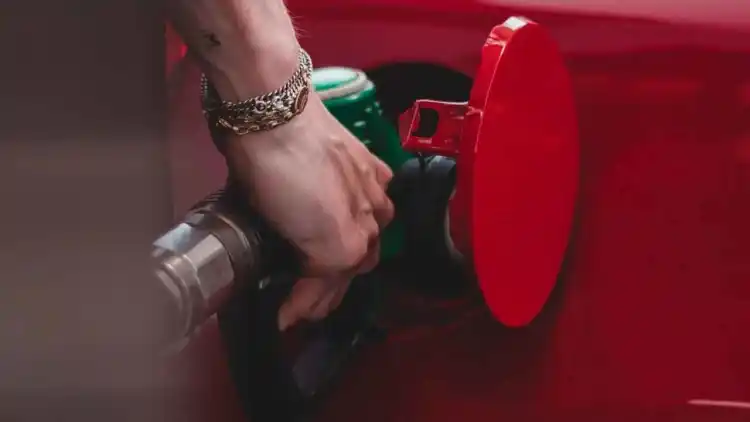- How Does the Handbrake Work?
- What Happens When You Drive with the Handbrake Up?
- What Damage Can Occur?
- Real-World Scenario: "The Cost of a Little Mistake"
- What Should You Do Next?
- Handbrake Damage – Severity vs. Driving Distance
- Prevention and Damage Limitation
- How Handbrake Mistakes Differ by Vehicle Type
- The Bottom Line
Most drivers have accidentally set off while their handbrake (parking brake) is still engaged. It’s an easy mistake—especially in busy moments or when driving an unfamiliar car. But what happens if you leave your handbrake up and drive for a few minutes, or even longer? This article breaks down the real consequences, how your brake system responds, the warning signs, and what to do next to save yourself money—and keep your car safe.

How Does the Handbrake Work?
The handbrake holds your car in place while parked, especially on slopes. It’s not designed to stop a moving vehicle or to be left engaged while driving.
Most parking brakes clamp onto the rear wheels. When engaged, they create friction and resistance, making it harder to move.
Newer cars may trigger dashboard or audio warnings if you drive off with the handbrake up, but older cars often won’t alert you.
Some electric handbrakes will automatically disengage if you accelerate.
What Happens When You Drive with the Handbrake Up?
Extra friction: The brake pads or shoes are rubbing constantly against the wheels, generating heat.
Heat build-up: Even short low-speed drives (a few minutes or city distances) can cause brake pads to glaze, making them less effective and more slippery.
Longer & faster drives: The heat multiplies with speed and duration—overheating can boil brake fluid, warp rotors, and damage calipers and cables.
Reduced performance: You may feel the car dragging, lose acceleration, or notice reduced fuel efficiency as the engine works harder.
Smell & smoke: If you notice a burning smell, stop driving immediately—this usually means your brakes are overheating, and you risk permanent damage.
What Damage Can Occur?
Brake pad/shoe wear: Can be severe if driven long distances; may require complete replacement.
Glazed pads: Short drives can create a slick "glaze," reducing braking power and making future stops less effective.
Boiled brake fluid: Extreme heat sometimes causes fluid to boil—leading to mushy pedals or total brake failure.
Warped rotors/drums: Heat may deform metal components, making the brakes pulsate, vibrate, or squeal.
Caliper/cable damage: Stretching or seizing can leave the parking brake ineffective or stuck.
Real-World Scenario: "The Cost of a Little Mistake"
Imagine starting your busy morning with the handbrake lightly engaged (just a click or two). You cruise five miles without noticing. There’s no dramatic noise or smell, just a little extra drag and slightly reduced acceleration. Later, you notice your brakes feel a bit spongy, pulsate, or vibrate when stopping. After inspection, the technician finds glazed pads—the result of friction and heat. With another similar mistake, it could mean total failure and a big repair bill. The lesson: every little detail counts!
What Should You Do Next?
Smell burning? Stop and check brakes immediately. If pads or fluid overheat, visit a workshop before driving further.
Test brakes: After disengaging the handbrake, check for spongy, pulsating, vibrating, or bouncing brakes. These indicate possible damage.
How far and fast did you drive? Longer, faster trips mean a bigger risk. Mention details to your mechanic when you get an inspection.
Handbrake Damage – Severity vs. Driving Distance
Prevention and Damage Limitation
Check dashboard for warning lights—even on new cars, don’t assume all warnings are active.
Always release the handbrake fully before moving, especially if the lever or button feels stiff.
If you notice unusual resistance or sounds, stop and check—better safe than sorry.
After an incident, get brakes professionally inspected even if you feel only minor symptoms.
How Handbrake Mistakes Differ by Vehicle Type
Front-wheel drive: May feel obvious drag; the car usually struggles to move with brake engaged.
Rear-wheel drive: Can be easier to miss, greater risk of severe brake overheating.
Electric or automated handbrakes: Some disengage automatically, reducing risk.
The Bottom Line
Driving with your handbrake up isn’t a disaster if caught early, but repeated or long journeys can cause serious (and expensive) brake damage. From glazed pads to total brake failure, prevention is always easier than repair. Always pause before moving off—handbrake down, warning lights checked—and save yourself from a costly, stressful mistake.












